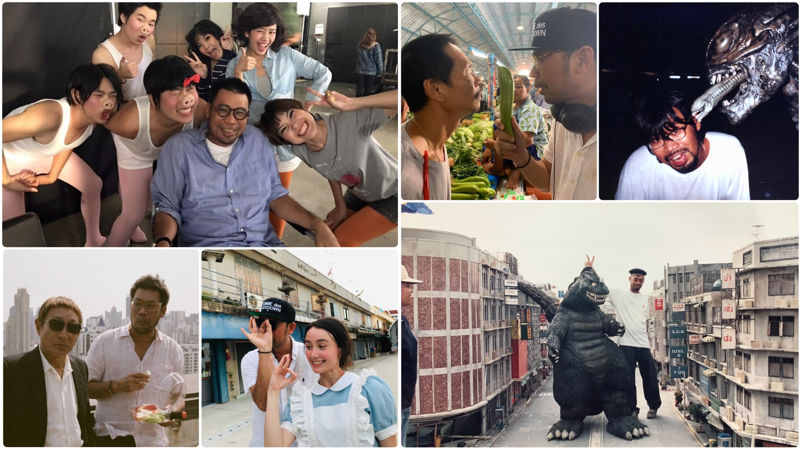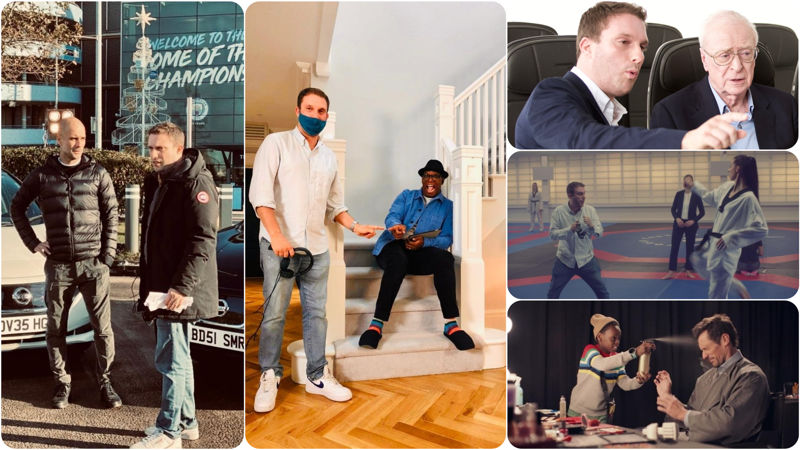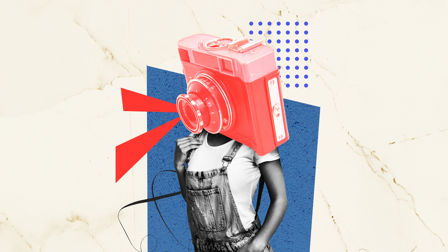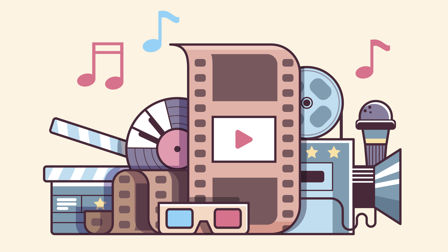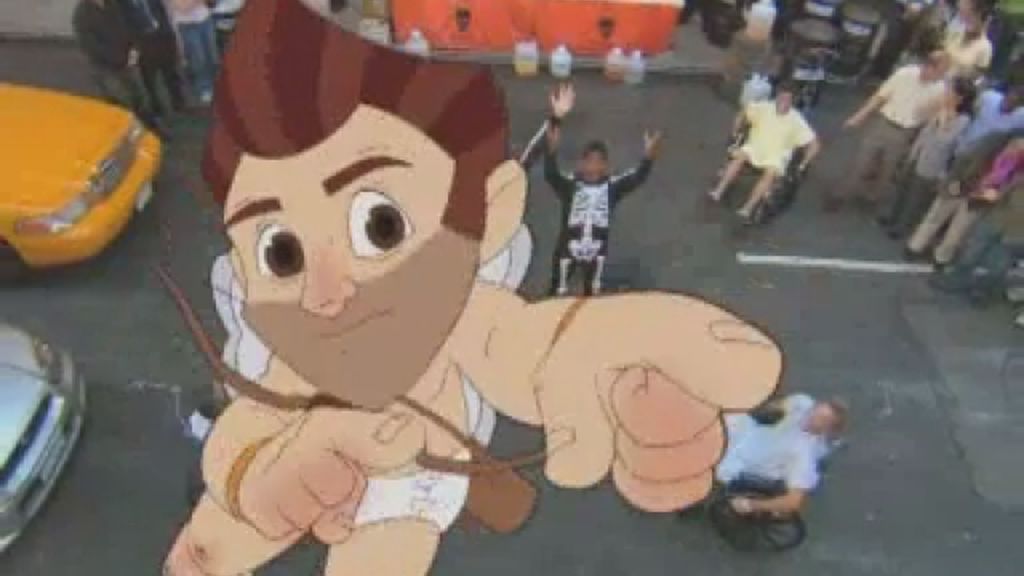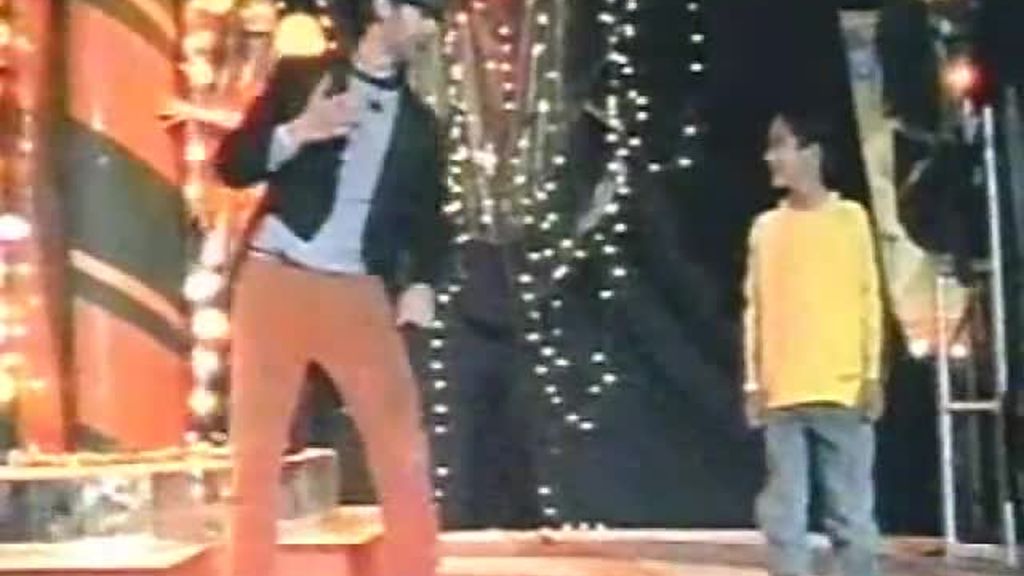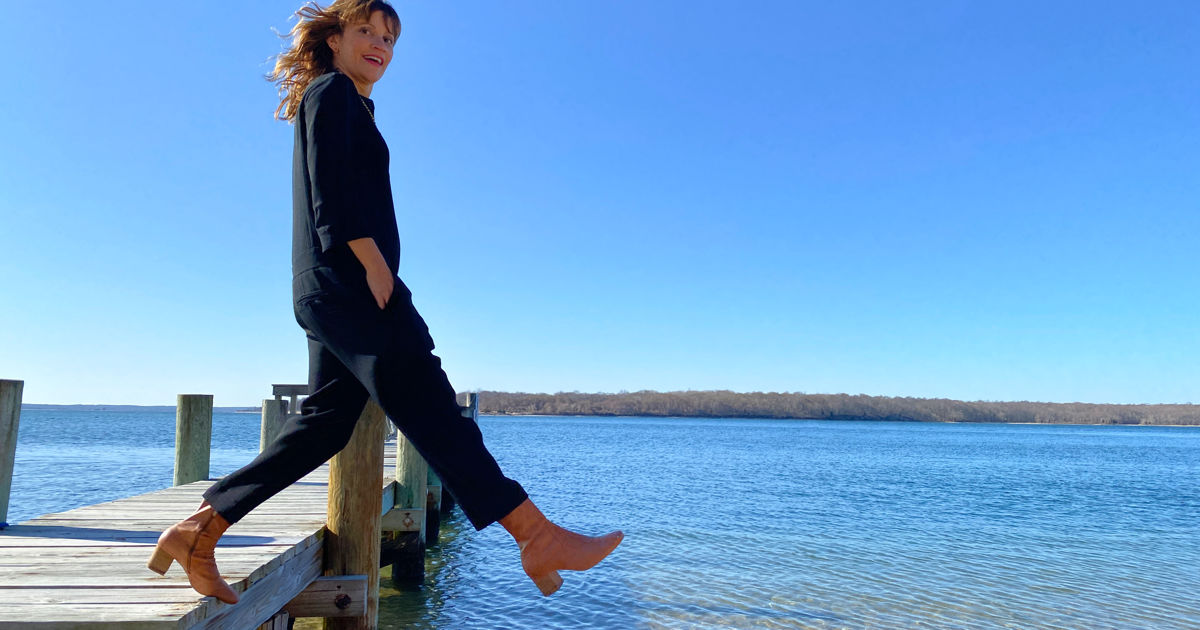The Way I See It: Tiffany Rolfe
Tiffany Rolfe thought she might become an archaeologist, but adland beckoned and rather suited her. She tells Carol Cooper how she went from promoting her childhood candy stalls, to becoming Global CCO at R/GA, a journey that took in innovations such as family therapy puppets, founding an internet start-up, and pitching brilliant-but-cheesy concepts to Steve Jobs.
I was born in 1976 in Vinita, Oklahoma, home of the state mental health institution and (at the time) the World’s Largest McDonald’s. At the intersection of insanity and an iconic brand – which pretty much sums up my career to this point.
My earliest memory was when I was three-years-old and fell asleep while hiding under the kitchen sink counter for fun. My parents called the police and neighbours to start a search. I’ll never forget everyone’s emotions as I emerged into the living room rubbing my eyes. I still can fall asleep pretty much anywhere, in a matter of minutes, which came in handy during my late nights at Crispin Porter + Bogusky.
To be successful in tech, timing is critical. You have to be earlier than most, but usually not first.
Early on my parents owned a headshop/waterbed store called Joint Possession. As a branding person, I have to say that’s a pretty great name. My mom was the creative one. And then my dad became more of a serial start-up guy. He was always ahead of the trends: Selling paraphernalia before pot was legal; got into recycling and solar paneling before it mattered to people; got into drones before they were mass; and vaccine needles before there was a pandemic. So, their businesses were innovative but not usually lucrative. To be successful in tech, timing is critical. You have to be earlier than most, but usually not first.
My parents encouraged my creativity, but also entrepreneurialism. We struggled financially so I was always trying to find ways to make my own money. I used to have lemonade/candy stands. I’d pay local kids in candy to wheel a wagon around with a sign advertising my stand.
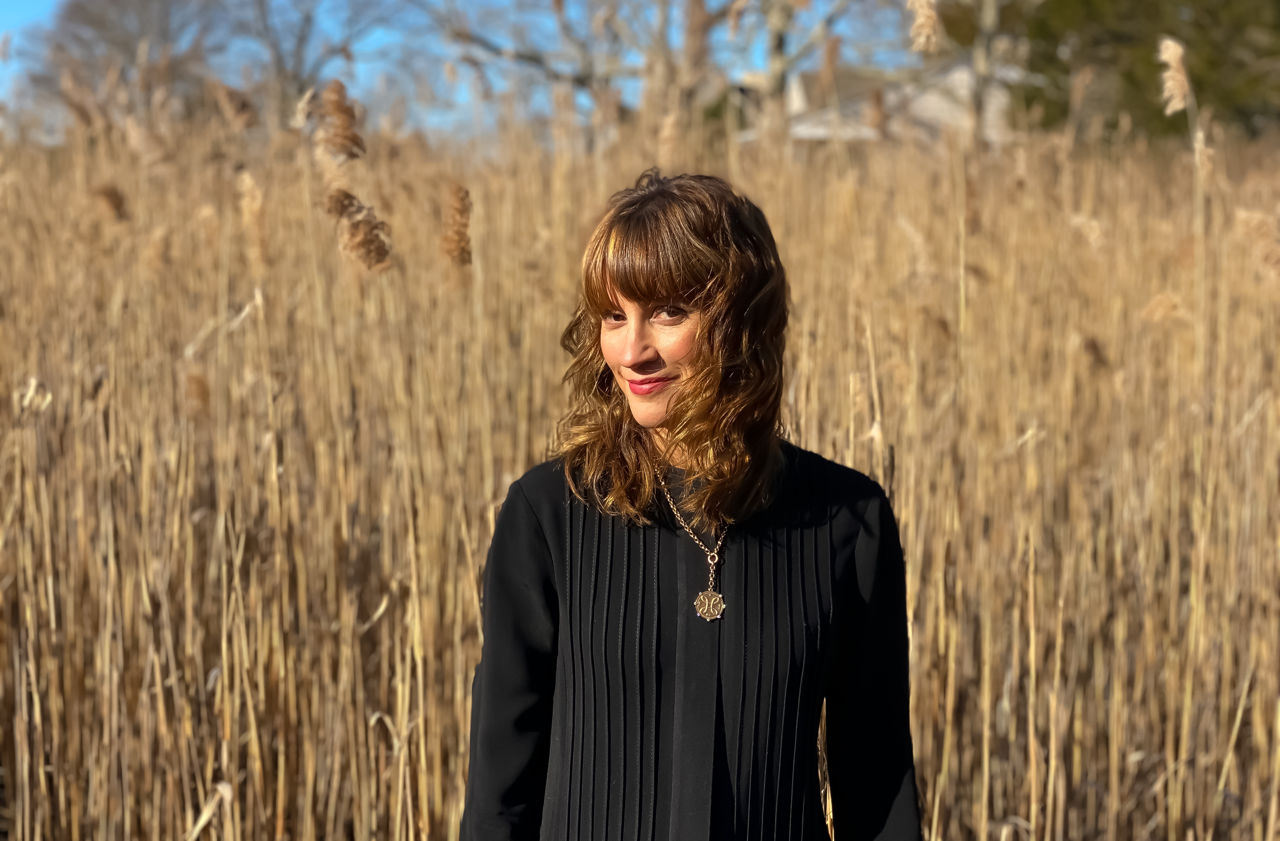
Above: Tiffany Rolfe, Global CCO at R/GA [photography credit; Andrew Osborne].
My childhood was filled with laughs. But often we laughed out of desperation. My parents were so young, they were 16 and 20 when they had me. They were still growing up while struggling to support a family. I can’t imagine responsibility at such a young age. I had my first kid at 37! But no matter how hard things were, we could always find something to laugh at, often ourselves. One year, for Christmas, I bought us all puppets, which I called Family Therapy Puppets. We would talk through our issues through our puppet hands.
When my family were chosen to be on the game show Family Feud, a talent scout saw me and asked if I wanted to audition for the new show, Punky Brewster.
As a child I thought I was either going to be an archaeologist or a famous actress. I loved ancient civilisations and exploring rocks and other artefacts. But then I started to dream about escaping Oklahoma and moving to Hollywood. When my family were chosen to be on the game show Family Feud, a talent scout saw me and asked if I wanted to audition for the new show, Punky Brewster. I didn’t get the part, but I got the acting bug.
Years later, after my high school graduation, I packed up my car and moved to Los Angeles. Dreaming of making it as an actor, I went on a couple of auditions – which I hated. I waited tables and took some pre-med classes, then I teamed up with my neighbour and partnered on an internet start-up. We built websites for Pixar and Disney. I was just 19-years-old when I presented to Steve Jobs a website concept for the film A Bug’s Life. We had a concept where your computer gets a virus, the site would take an image of your desktop and the bug characters appeared to pop out of your file folders. It was a pretty good idea, but Steve said it was cheesy. Being told your idea is cheesy by Steve Jobs pushes you to be better.
Though I’d been in web design I was self-taught and knew nothing about real design, typefaces, color choices, layouts etc. I wanted to get a college degree, so I took a night class in advertising because they didn’t have a web design program yet. It came pretty naturally to me – I knew I’d found my thing. It was creativity and business combined. I enrolled in the full program the next semester.
Credits
View on- Agency Crispin Porter + Bogusky
- Production Company Hungry Man
-
-
-
Unlock full credits and more with a shots membership
Credits
View on- Agency Crispin Porter + Bogusky
- Production Company Hungry Man
- Editor Kirk Baxter
- Director of Photography Scott Henrickson
- Agency Producer Matt Bonin
- Agency Producer Rupert Samuel
- Creative Tiffany Kosel
- Creative Paul Stechschulte
- Creative Franklin Tipton
- Director Bryan Buckley
- Producer Angelo Gastal
- Producer Ralph Laucella
- Creative Director Steve O'Connell
- Creative Director Alex Bogusky
- Creative Director Andrew Keller
Explore full credits, grab hi-res stills and more on shots Vault
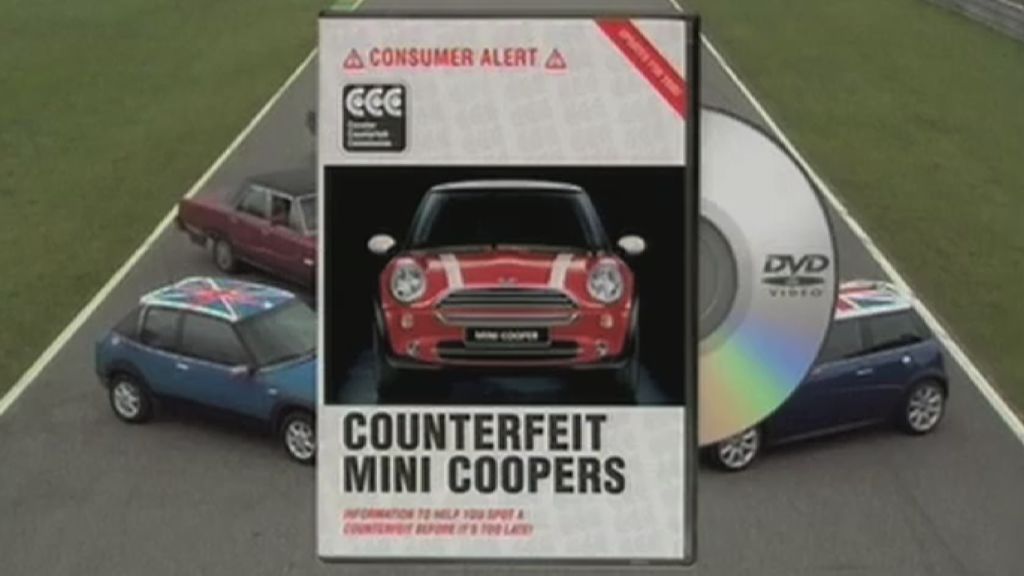
Credits
powered by- Agency Crispin Porter + Bogusky
- Production Company Hungry Man
- Editor Kirk Baxter
- Director of Photography Scott Henrickson
- Agency Producer Matt Bonin
- Agency Producer Rupert Samuel
- Creative Tiffany Kosel
- Creative Paul Stechschulte
- Creative Franklin Tipton
- Director Bryan Buckley
- Producer Angelo Gastal
- Producer Ralph Laucella
- Creative Director Steve O'Connell
- Creative Director Alex Bogusky
- Creative Director Andrew Keller
Above: One of Rolfe's favourite pieces of work from her time at CP+B, for MINI.
In 2002 I graduated from the Art Center College of Design in Pasadena and first on my list was CP+B. They were small and causing a buzz. I finally got a connection through Arty Tan, one of my teachers. Turned out the interview was for the day I landed off a red-eye. I interviewed for nine hours with what felt like the entire agency and was told I got a job the next day. I stayed for 10 years.
In the early days of my career I probably seemed insane. I never stopped working. I slept under my desk some nights. We all drove ourselves hard back then at Crispin. It’s something I had to learn how to manage – to not place the same expectations on others as I set on myself.
Among my mentors when I was starting out was Craig Joiner, one of my teachers at the Art Center. I credit him for helping me think about ideas that could really change behavior, vs ads that were just clever plays on words and visuals.
In the early days of my career I probably seemed insane. I never stopped working. I slept under my desk some nights.
Another mentor was Alex Bogusky at CP+B, of course. His instincts were great, but he understood the power of making work that was part of culture, of thinking about why an idea matters to people, what conversation it is tapping into.
I love brave work that breaks conventions. An old school industry fave is VW’s Lemon ad. A car company willing to say the worst thing about its product as a way to demonstrate the lengths they go to make perfect cars. It was about their values as a company, and how they worked, so not just a marketing message. A modern-day equivalent of that is Mouldy Whopper by Burger King.
My favourite piece of work is MINI Counterfeit [out of CP+B]. It was disruptive in many ways. We couldn’t afford TV so we created a product to sell for an infomercial, which was much cheaper. It was a video put out by the ‘Counter-Counterfeit Commission’ that helped you detect a real MINI from a fake. We also put fake car ads in Autotrader and distributed brochures. It was brave for the client to create a campaign that mostly showed crappy old cars instead of MINI Coopers as a way to highlight the strengths and iconic nature of their own car.
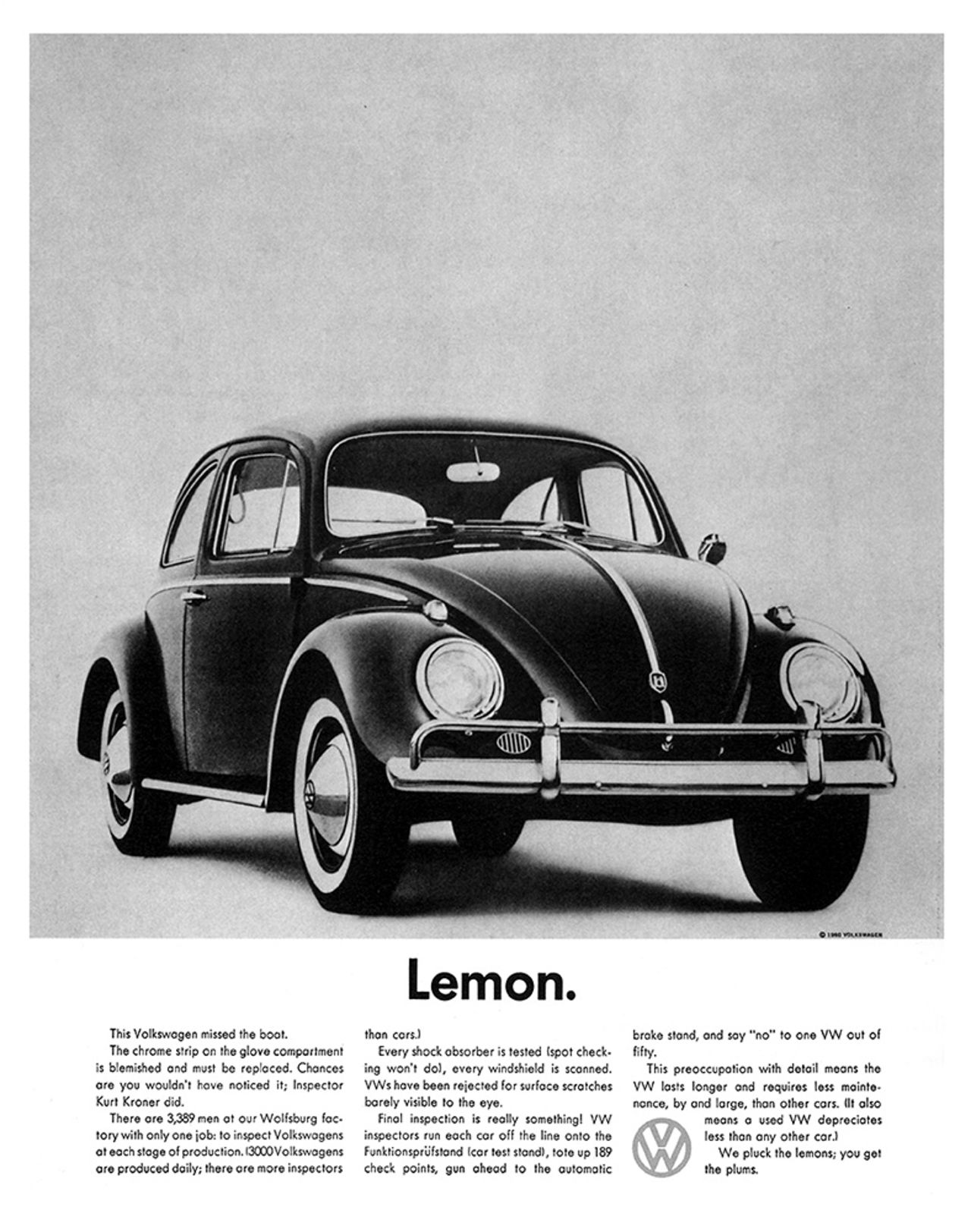
Above: Volkswagen's famous Lemon poster.
MINI Counterfeit was one of the first fully integrated marketing campaigns of its kind – it won a Titanium Lion at Cannes 2005. And we actually built a real chop shop in Brazil. We taped together motorcycles and painted Lincolns with white roofs. It was hell to produce, and I had food poisoning for a week, but so worth it.
There are different kinds of tensions to get to great work. Tension in the insights and tension in the thinking. Finding the tension in the work is getting to the heart of what’s holding people back from buying into your brand. It’s much bigger than awareness. It’s the truth that’s hard to admit. If you don’t tackle it head on, you’ll never get to the root of the problem. So, with the MINI campaign, we were launching a small car in a Hummer world, where bigger was better. That was our tension. We had to take that on and reverse the narrative in culture. And luckily we were able to get ahead of the tension that big cars soon would face – that they’re worse for the environment.
Another example was the anti-smoking campaign, Truth. The tension in anti-smoking ads was that you couldn’t just tell teens that smoking was bad for them, and to stop. The tension was that’s why they liked them. They were a form of rebellion. Dangerous for an age that thinks they are invincible. So, we had to give them something else to rebel against, the tobacco execs.
Finding the tension in the work is getting to the heart of what’s holding people back from buying into your brand. It’s much bigger than awareness.
Above: A duo of spots Rolfe worked on while at CP+B for the Truth Anti-Smoking campaing.
Media (and people!) are even more distributed across platforms today than when I worked on YouTube campaigns six years ago. Creators/influencers (though I hate that word) are even more critical for connecting brands with audiences, but engagement is what really matters now, not just reach. Brands used to think reach and scale was the most important, so creators with the most followers ruled. For one, that’s easy to fake, and two, it’s more important that creators have engaged communities. Brands have realised they need to partner with creators that share their values and create content that the communities are aligned with.
Young people are leading the way for all of us when it comes to social justice. Those entering into advertising will want to use their creativity to help make change through the work they do.
I love to make the uninteresting, exciting. I like the underdogs; the ones that want to transform.
While I love a cool brand, I find the perceived ‘boring’ or ‘hard’ companies a better challenge. I’m not sure most creatives agree with me on that. In school most kids chose Tabasco Sauce or Apple iPods for projects. I had H&R Block (tax advisors). I love to make the uninteresting, exciting. I like the underdogs; the ones that want to transform. I find they are willing to take more risks.
At Crispin there wasn’t a single agency that would take on Burger King on at the time, and we changed that. Plus, I was super-excited to pitch AmexOPEN, the small business side of Amex. Most thought working on small business wasn’t cool. So we made it cool.
Above: A spot from Rolfe and R/GA's work on a recent campaign for YouTube.
The best piece of advice I’ve been given was after having my first child while at co:collective and struggling with work/parenting balance. Rose Ryan, my boss and the CEO, who’d raised her daughter while also running a company, told me to give myself a break. There’s a lot of guilt that comes with the role of working mom. It was helpful to know you can still be a great mom and not run the bake sale.
She also gave me advice starting at R/GA to build a good team around me. I like to take on many projects. I have a hard time saying ‘no’. I get a lot done, but I need a team. I need the people around me that sweat the details. You have to find the people that bring the strengths that you don’t have.
If I could time travel, I’d visit Tiff, aged 13, and tell her to not be embarrassed about playing the viola; that her old self will be cooler if she sticks with it! I’d then actually have a talent or hobby besides working to share in this article!
I’m very comfortable inside my own head with my thoughts, but I can turn on my extrovert when I need to.
Credits
View on- Agency R/GA/New York
- Chief Creative Officer Tiffany Rolfe
- Executive Creative Director Chris Joakim
- Executive Creative Director Mike Donaghey
- Associate Creative Director Jackson Harper
- Associate Creative Director Chris Parker
- Senior Art Director Babo Schokker
- Senior Copywriter Rowan Mansfield
- Executive Director Margo Lowry
- Chief Creative Officer Richard Ting
- Director/ Content Production Erica Jensen
- Executive Content Producer Carol Powley
- Senior Content Producer Nick Williams
- Associate Content Producer Erin Stella
- Senior Producer Christine Barnowsky
- 3d Art Director Natasha Saenko
- Senior Art Director Corey Thorn
- Group Production Director Satoko Iinuma
- UGC Search & Clearances Catch & Release
- Stock Footage Film Supply
- Sound Designer Pete Karam
- Talent/Voice Over Carla Renata
- Colorist Adrian DeLude
Explore full credits, grab hi-res stills and more on shots Vault

Credits
powered by- Agency R/GA/New York
- Chief Creative Officer Tiffany Rolfe
- Executive Creative Director Chris Joakim
- Executive Creative Director Mike Donaghey
- Associate Creative Director Jackson Harper
- Associate Creative Director Chris Parker
- Senior Art Director Babo Schokker
- Senior Copywriter Rowan Mansfield
- Executive Director Margo Lowry
- Chief Creative Officer Richard Ting
- Director/ Content Production Erica Jensen
- Executive Content Producer Carol Powley
- Senior Content Producer Nick Williams
- Associate Content Producer Erin Stella
- Senior Producer Christine Barnowsky
- 3d Art Director Natasha Saenko
- Senior Art Director Corey Thorn
- Group Production Director Satoko Iinuma
- UGC Search & Clearances Catch & Release
- Stock Footage Film Supply
- Sound Designer Pete Karam
- Talent/Voice Over Carla Renata
- Colorist Adrian DeLude
Above: Rolfe worked on last year's Ad Council PSA Fight for Freedom.
My weaknesses are the other side of the coin to my strengths. I often tell staff at their reviews that the things they are rated high on are usually correlate to the things they need to work on. That’s the same for me. I take a lot on. I never say no. Which in theory is a good thing. But also, I’m always too over-scheduled, which can make it feel like I’m not giving people and projects quality time and focus.
I’m an extroverted introvert. I’m very comfortable inside my own head with my thoughts, but I can turn on my extrovert when I need to. I learned to be extroverted through practice, from having to move schools every couple of years.
I make myself do things that I’m not naturally comfortable doing.
I make myself do things that I’m not naturally comfortable doing. About 10 years ago Cindy Gallop persuaded me to do a presentation at the 4As, which had been criticised for not having enough female speakers at their events. She enabled me to be confident enough to say ‘yes’ to things. I still feel like throwing up or passing out every time I speak at an event. But I never regret doing it.
The single best and worst human inventions? Best: toilet paper – as witnessed by how people hoarded it during the pandemic. Worst: racism – the biggest error we’ve ever made as a human race.
At the end of the day, what really matters? Black Lives Matter.
)
